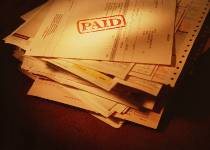When you file for chapter 13 bankruptcy protection you are required to repay your outstanding debt, usually within a three to five year period, and allowed to keep your property. This bankruptcy option can be ideal for working individuals who have a substantial amount of debt on secured assets like a home, automobile or other property.
Keep Your Bankruptcy Plan Payments Current
One of the first steps in declaring chapter 13 bankruptcy involves entering into a three to five year debt repayment plan. Make sure you stay current and do not fall behind on your plan payments. If you fall behind on your plan payments, you could find yourself in an even worse situation insofar as your bankruptcy protection may be lifted.
 When following a chapter 13 bankruptcy payment plan, it is imperative that you stick with your payment schedule. By doing so you may find that at the end of the payment plan some of your unsecured debt is discharged.
When following a chapter 13 bankruptcy payment plan, it is imperative that you stick with your payment schedule. By doing so you may find that at the end of the payment plan some of your unsecured debt is discharged.
Chapter 13 bankruptcy can protect your secured property and assets while you repay your creditors over a three to five year period. If you have a regular income but are struggling to catch up your payments, then chapter 13 may be the best solution for you. You should discuss all of your bankruptcy options with an experienced bankruptcy lawyer, and get his/her opinion as to which bankruptcy option is best for your situation.
